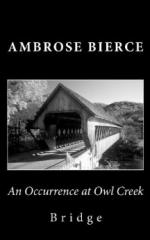|
This section contains 4,174 words (approx. 14 pages at 300 words per page) |

|
SOURCE: Stoicheff, Peter. “‘Something Uncanny’: The Dream Structure in Ambrose Bierce's ‘An Occurrence at Owl Creek Bridge’.” Studies in Short Fiction 30, no. 3 (summer 1993): 349-57.
In the following essay, Stoicheff considers Bierce's utilization of dream theory in “An Occurrence at Owl Creek Bridge,” maintaining that through his “intuitive employment” of Louis Ferdinand Alfred Maury's and Sigmund Freud's dream models Bierce “generates and sustains the uncanny impression of unconscious reality.”
“An Occurrence at Owl Creek Bridge” has received more critical attention than any other single work by Ambrose Bierce. This is probably because it combines into one text the best ingredients distributed among much of Bierce's fiction—satire, irony, manipulation of the reader, the exposure of human self-deception, a surprise ending, and a stylistic compression and tautness. It may also be because something of the story still eludes its commentators, leaving a residual and “uncanny” (to use Bierce's convenient term...
|
This section contains 4,174 words (approx. 14 pages at 300 words per page) |

|


